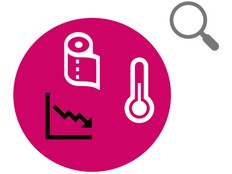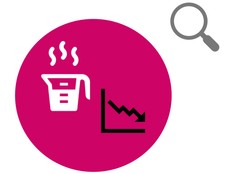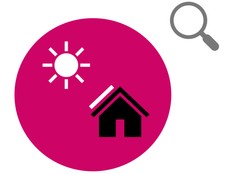ステップ 1: 準備
説明
BBC micro:bitを使って、距離が音の大きさに与える影響を調べましょう。
このプロジェクトは、理科教師向けに White Rose Science と共同で開発されたもので、学生が音の伝わり方について学べます。 また、コンピュータプログラムにおけるシーケンス、ループ、変数、選択の使用についても学習できます。
この動画では実験の手順を説明します。
動作の仕組み
- 1か所から一定の音量で連続音を鳴らします。
- micro:bitとバッテリーパックを使って、音源から2メートル間隔で音量のデシベル値を測定します。
- 測定結果から、音は音源から遠くなるほど小さくなることを理解できるでしょう。
必要なもの
- 一定音量の連続音源は、お使いのコンピュータから当社のtone.mp3ファイルを再生することをお勧めします(ドラムなど音量が変動する音源は使用しないでください)
- micro:bit
- バッテリーパック
- 巻尺またはメートル定規
- 実験を行うための広くて静かなスペース(例:校舎のホール)
ステップ 2: 調査
- hex ファイルをダウンロードし、プログラムを micro:bit に読み込みます。 この実験を行うために、このプロジェクトのプログラムを自分で書く必要はありません。 プログラミングに興味がある場合は、下の「ステップ3:プログラミングする」セクションを参照してください。
- 連続音を再生します。
- micro:bitを音源の隣に置きます。 ボタンAを押すと測定が行われ、ボタンBを押すと測定値がmicro:bitのLEDディスプレイに表示されます。
- micro:bitのLEDディスプレイに測定値が表示さていないときは、現在の音量を示すグラフが表示されます。 このグラフは、測定を行うタイミングを決める際の参考としてご利用ください。 測定値の精度を低下させる可能性のある他の音がないことを確認してください。
- 巻尺または定規を使って、音源から2メートルの距離を測り、再度測定します。
- 2メートル間隔で測定を続け、8メートルまで測定してください。 (この距離を超えると、micro:bitによる計測値の精度が下がる可能性があります)。
ヒント
- 音源までの距離を直線で簡単に測れるように、障害物のない広いスペースで実験を行いましょう。
- 実験は静かなスペースで行いましょう。
- より正確な結果を得るには、それぞれの距離間隔で数回測定を行い、それらの平均値を求めましょう。
ステップ3:プログラミングする
このプロジェクトのプログラミング方法については、次の動画をご覧ください:
このプロジェクトのプログラムを修正したい場合は、下のいずれかのボタンをクリックしてください:
This content is published under a Creative Commons Attribution-ShareAlike 4.0 International (CC BY-SA 4.0) licence.



